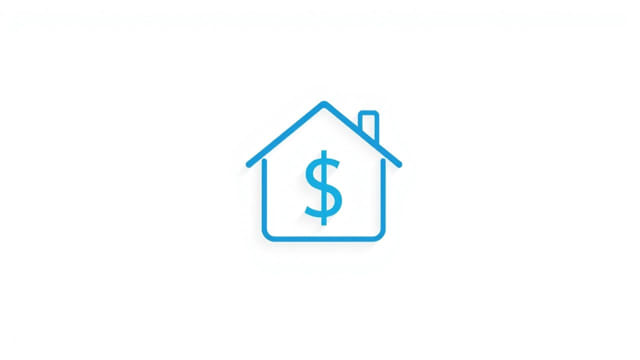Paying off a loan before its scheduled term may seem like a smart financial move, especially when you want to reduce your debt burden early. However, doing so often comes with certain costs known as foreclosure charges. If you have taken a personal loan through Cred Cash, understanding the foreclosure charges associated with your loan is crucial. Foreclosure charges can impact your overall savings and affect how soon you should plan to clear the loan. These fees are often overlooked when signing up for a loan but can become a surprise expense later.
What Is Foreclosure in the Context of Cred Cash?
Basic Meaning
Foreclosure of a loan means repaying the outstanding loan amount in full before the scheduled repayment tenure ends. Cred Cash, a personal loan service partnered with various banks and NBFCs through the CRED platform, allows users to foreclose their loan under certain conditions.
Why People Choose Foreclosure
- To reduce interest outgo over the long term
- To free up monthly income from EMIs
- To avoid long-term debt dependency
- To improve credit score by closing the loan early
Understanding Foreclosure Charges
Definition
Foreclosure charges are fees levied by the lender when the borrower chooses to repay the loan in full before the end of the loan tenure. These charges compensate the lender for the loss of future interest payments that would have been earned if the borrower had continued with EMIs.
Typical Rates
The foreclosure charges for Cred Cash personal loans generally vary depending on the lender that has provided the loan through the Cred platform. While Cred itself is a facilitator, the loan terms, including foreclosure charges, are governed by the partnering bank or NBFC.
In most cases, foreclosure charges range between2% to 5%of the principal outstanding at the time of foreclosure. Some lenders may also add GST (Goods and Services Tax) to the charges, increasing the total cost of early repayment.
Cred Cash Partner Banks and Their Policies
Different Terms by Lenders
Cred Cash collaborates with financial institutions such as IDFC FIRST Bank, Axis Bank, and others. Each lender has its own policy regarding foreclosure:
- IDFC FIRST Bank: Typically allows foreclosure after 6 EMIs are paid. Charges range from 3% to 5%.
- Axis Bank: Foreclosure may be allowed after 12 EMIs. Charges often fixed around 4%.
- NBFCs like CASHe or EarlySalary: May allow foreclosure after 3 months with charges starting from 2%.
It’s important to read the loan agreement or reach out to the Cred Cash support team to get clarity about which lender is backing your loan and what the exact foreclosure terms are.
How to Check Foreclosure Charges on Cred Cash
Through the Cred App
You can follow these steps to check the foreclosure charges on your active loan:
- Open the Cred app and navigate to the ‘Loans’ section
- Select your active Cred Cash loan
- Look for the option that details loan terms or repayment options
- If foreclosure is allowed, you’ll see an option to request early closure along with any applicable fees
Contact Customer Support
If details are not available in-app, it is advisable to contact Cred support. They can direct you to the appropriate lender for accurate foreclosure information.
Is It Worth Paying the Foreclosure Charges?
Cost-Benefit Analysis
To decide whether foreclosure makes sense, calculate how much interest you would save by closing the loan early versus how much you will pay as a foreclosure charge. Here’s a quick example:
- Outstanding loan amount: ₹2,00,000
- Foreclosure charges: 4% = ₹8,000
- Remaining interest if paid over tenure: ₹25,000
In this case, paying ₹8,000 now helps you save ₹17,000 in future interest, making foreclosure financially beneficial.
Impact on Credit Score
Foreclosing a loan is generally seen as a positive move by credit bureaus as it shows financial discipline. However, ensure the closure is updated accurately in your credit report to avoid discrepancies.
Tips Before Foreclosing a Cred Cash Loan
- Check Lock-in Period: Some lenders do not allow foreclosure within the first few months. Ensure you meet this requirement.
- Compare Interest vs Charges: Calculate your potential savings before proceeding.
- Ask About Documentation: Some lenders require a written request or online submission to process foreclosure.
- Get a No Dues Certificate: After foreclosure, request a certificate confirming the loan is fully repaid.
Alternative to Foreclosure: Part-Payment
What is Part-Payment?
If you cannot afford full foreclosure but still want to reduce your debt, part-payment is an option. This means paying an extra lump sum toward the principal, which lowers the interest and possibly reduces the tenure.
Availability
Not all Cred Cash partners allow part-payment. You must verify with your lender if this option is supported and whether there are any fees for making part-payments.
Legal and Regulatory Aspects
RBI Guidelines
The Reserve Bank of India (RBI) allows borrowers to foreclose personal loans without charges if the loan is on a floating rate. However, most Cred Cash loans are on fixed interest rates, where lenders are still permitted to apply foreclosure charges.
Consumer Rights
You have the right to receive all foreclosure-related information in writing. If the lender fails to communicate clearly or overcharges, you can file a complaint with the RBI Ombudsman or consumer forum.
Foreclosure charges for Cred Cash loans vary depending on the lending partner, the tenure completed, and the terms in your loan agreement. While paying off a loan early has clear benefits in terms of interest savings and improved credit standing, it is important to weigh these advantages against the costs involved. Always check your loan documents and consult with the customer service team before proceeding. In some cases, the savings from early repayment outweigh the charges, making foreclosure a smart move. In others, continuing with regular EMIs may be more economical. An informed decision can save you money and improve your overall financial health.
